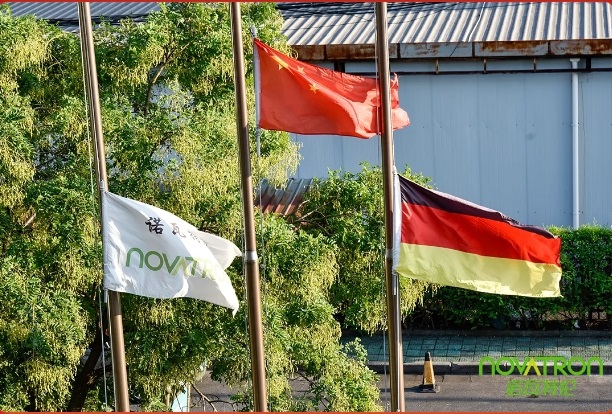Dry bonding technology plays an important role in the production of flexible packaging, but the problem of edge bonding has always been a key factor affecting product quality and production efficiency. Edge bonding refers to the phenomenon where the edges of the film stick together during the rewinding process after coating with glue, drying, and hot pressing in the composite process. This can result in difficulty in separating the finished film, and in severe cases, it can even lead to product scrapping.
Equipment from Novatron Electronics can assist in effectively avoiding the issue of edge bonding, and the following measures can be taken:
Control Glue Amount
Ensure uniform pressure at the edges of the glue roller to avoid glue accumulation at the edges due to excessive pressure.
Adjust Blade Parameters
Properly increase the blade pressure and adjust the angle between the blade and the anilox roller (35°~45°) to reduce the amount of glue applied and maintain uniform distribution of the glue.
Pressure Roller Width
Ensure that the width of the pressure roller is slightly less than the width of the film, typically about 5mm narrower, to prevent glue overflow.
Pressure Roller Pressure
Adjust the pressure of the pressure roller so that it is sufficient to press the film and the coating roller together without causing the glue to overflow the sides.
Composite Substrate Width
Increase the width of the composite substrate so that it is a certain size wider than the printed film, which can effectively reduce the occurrence of edge bonding.
Material Flatness
Ensure that the composite substrate has been leveled before entering the composite process, reducing displacement and the risk of edge bonding during the composite process.
Equipment Maintenance
Regularly check and maintain equipment to ensure the normal operation and precise control of all components.
Operating Skills
Improve the skills and experience of operators to ensure they know how to correctly adjust equipment and handle emergencies.
By implementing the above measures, the frequency of edge bonding problems in the dry composite process can be significantly reduced, thereby improving product quality and production efficiency. It is important to note that the specific conditions of each production site may vary, so process parameters and equipment settings should be flexibly adjusted according to the actual situation during operation.

+86-(0)571-88634319
+86-(0)571-88620157
 English
English 中文
中文 日本語
日本語 한국어
한국어 français
français Español
Español italiano
italiano русский
русский português
português العربية
العربية ไทย
ไทย
